22/08/2024 The controversial four letter word beginning in F truly divides opinion, ‘fuel’, or more importantly what is the fuel will we be using in the years to come. Motorhub went to Paris to a remarkable expo to find out more.

Toyota has supplied 3,000 vehicles to the Paris 2024 Olympic and Paralympic games as its mobility partner. Just prior to the Paralympics Games starting the Japanese giant took the opportunity to showcase its “Mobility for All” expo in Paris, that featured practical demonstarations and talks on how it hopes to improve mobility for all while simultaneously reducing transport’s carbon footprint. So we’re all heading for EVs, right? Not necessarilly.

Toyota’s cheif scientist, Dr Gill Pratt told Motohub that while ‘carbon is our enemy’ he doesn’t believe there is a single powertrain solution to reduce carbon emissions from transport, rather he says there are multiple power sources. It was refreshing to hear such a non-pr-spun sounding statement (or was it a very clever spun statement??). Essentially Gill believes multiple soloutions need to be developed in tandem and right now there is really no size fits all soloution. An EV might be right for one person and not for another.

We know Europe is demanding at a governance level that manufacturers shift to selling zero emission vehicles but how they are powered need not exclusibvly come from batteries! Alternatives sources like hydrogen are being looked at – both as a direct fuel source that is injected into a slightly modified internal combustion engine, or used as an electricity generator in a fuel cell electric vehicle. Hydrogen is a headline grabber and right now is a viable, though costly, option in large machinery like ships, trains and trucks. We took a zero-emissions boat ride on the Seine in a catermeran powered by hydrogen without any fuss. There is also the exciting rise of ‘e-fuels’ (sythetic or bio sourced) that can be used in traditional engines with dramatically lower emisions than conventional fossil fuels.

Toyota has partnered with a diverse number of companies to collectively move mobility forward such as household names like motorcycle manufactures Yamaha and Kawasaki, right through to small independent companies that deal with providing mobility to people with disabilities. Toyota’s efforts to date have delivered excellent synergies. Toyota is not only encouraging but endorsing and in many cases financing innovative ways to enhance the lives of people with restricted mobility.

We saw at Toyotas’ inclusive mobility park many examples of innovation including one where Toyota’s Gazoo Racing (GR) division is assisting in the development of blades, for people lower limb issues. Motor assisted wheelchairs in many guises were present including some automated chairs that can travel pre programmed routes autonomously. A very simply but ingenius new invention makes manual wheelchairs easier to brake through a braking system in each wheel hub. The ‘EPPUR’ braking system reduces the amount of force needed by th euser to stop a wheelchair – an ideal soloution for people with wasting or reduced physical strength issues.
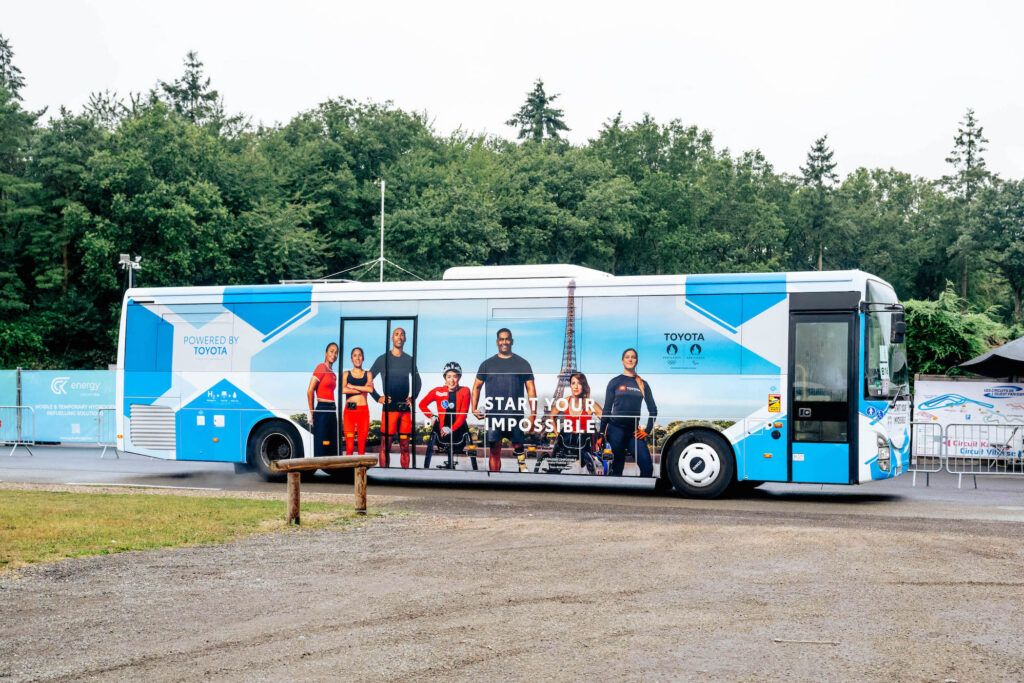
On our second day we took a hydrogen powered bus to a race circuit, at Dreux. There we got to experience first hand all of the alternaitve fuel sources in a variety of vehicles, on a variety of on and off-road tracks – plus there was a fully autonomous race car offering passenger rides. A number of Toyota’s own superstar drivers were on hand to remind us we are just mere mortals.

Advanced AI / artificial intelligence is going to form an integral part of our future mobility. Toyota’s fully autonomous self driving Yaris can now compete at race speeds and is well able to challenge the lap times of seasoned race drivers. With all the talk of fuel, in between testing vehicles, we enjoyed some pizza cooked in a hydrogen powered oven, followed by an ice cream deliverd by an hydrogen elctric cargo bicycle!

Avinash Balachandran, Vice President of the Human Interactive Driving (HID) division at Toyota Research Institute (TRI) said “AI is at a crossroad of acceptance.” In his presentation explained how humans don’t always make the best choices and can panic when confronted with road hazards. This often leads to drivers fixating on obstacles and crashing in to them. He pointed out, and this was the quote of the trip: “Computers don’t panic, they plan.”

Toyota has harnessed the skills of motorsport drivers and used their talents to feed its self driving AI cars to make the machines in to super drivers. The act of drifting a car is a skill most normal road users will never have but by training a car’s AI to understand and act out its dynamic actions it will enable autonomous cars of the future avoid collsions by taking masterful actions to evade clear. Toyota sees robust motorsport as a vital tool in helping it make more durable vehicles for consumers. We were spoilt with loads of outrageously quick Toyota race cars to interact with.

Like it or not AI is going to play growing role in the cars we drive. Avinash, to stress his point about AI’s advantages, showed us a video featuring two autonomous Supras drifting together in perfect harmony. The cars carried out the balletic manoeuvers with professional human-race driver-like skill. So the once science fiction notion that a computer could be a better driver than a human seems to be a reality.
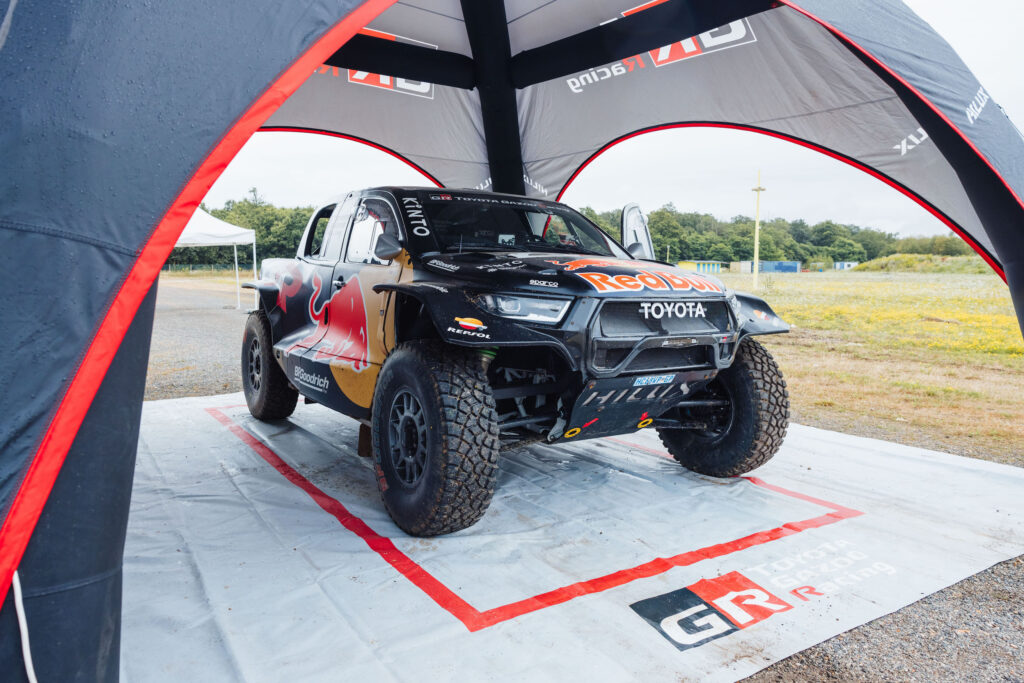
At Dreux there were ride along trips in an autonomous Yaris GR Sport race car and it was able to bring passengers for high-speed laps on a test track (there was a safety driver in the car at the same time). We drove multiple vehicles powered by the many fuel/propuslsion types Toyota is developing – needless to say they did exactly what it says on the tin with no hiccups.
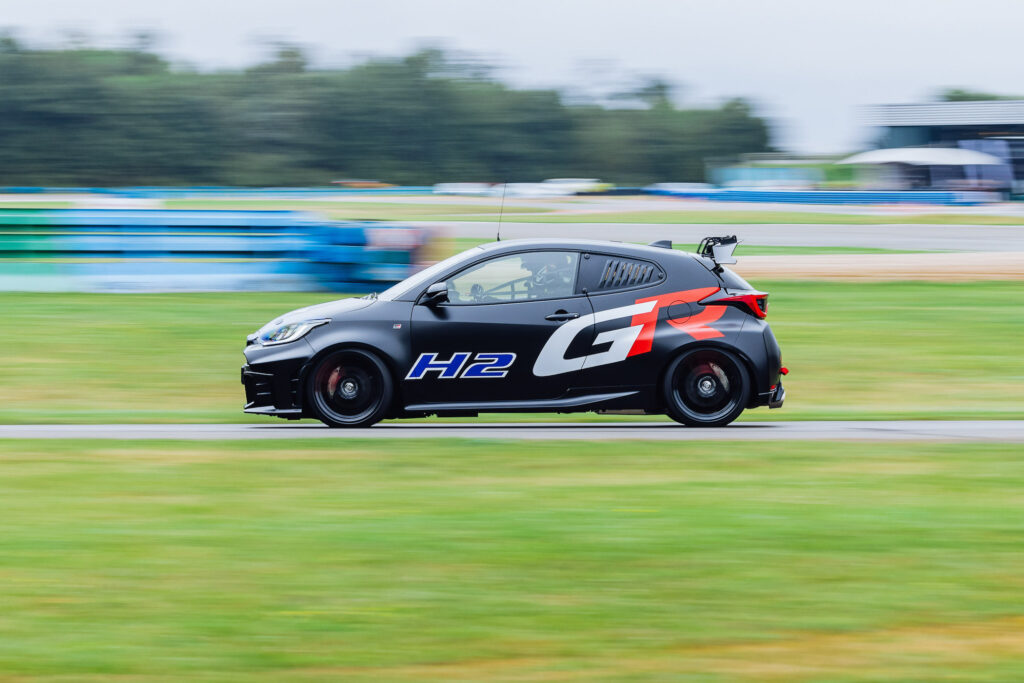
Hydrogen as a fuel source is always a headline grabber. Most are familiar with its aplication in fuel cell electric vehicles (FCEVs) but it can also be used as a direct fuel source fed in to an engine. FCEVs use hydrogen fuel to generate electricity for the batteries that power its electric vehcile underpinnings, with hydrogen power, the only thing coming out of the tailpipe is water vapour.

We also drove a variety of machines that used synthetic fuels. A number of Hilux pick up trucks or fitted with various powertrains from pure BEV (battery electric vehicles) power to hybrid power to hydrogen fuel. We drove the second generation Mirai FCEV, which is a common sight in Paris as there are circa 1,000 used in the city daily as taxis. An additional 500 is being added to the fleet for the games and these will remain after the Olympic flame departs for LA.
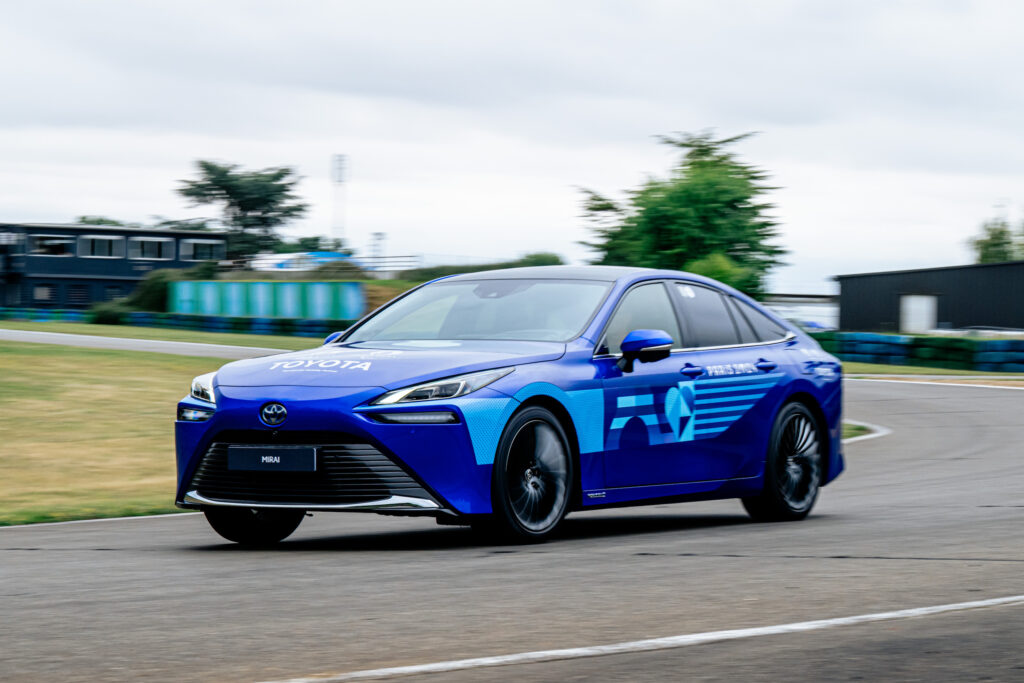
The Mirai was intended to come to Ireland but that project was shelved due to our poor hydrogen infrastructure. The car has the same footprint roughly as a Camry. Inside the seats are very comfortable but it sits four in what feels like a Corolla sized cabin. Toyota also took the opportunity to display hydrogen power in goods vehicles. There was an impressive automomous forklift display. Straticially placed sensors allow the forkloft drive and operate autonomously and very efficiently in a warehouse situation. The kit can be retro-fitted too.
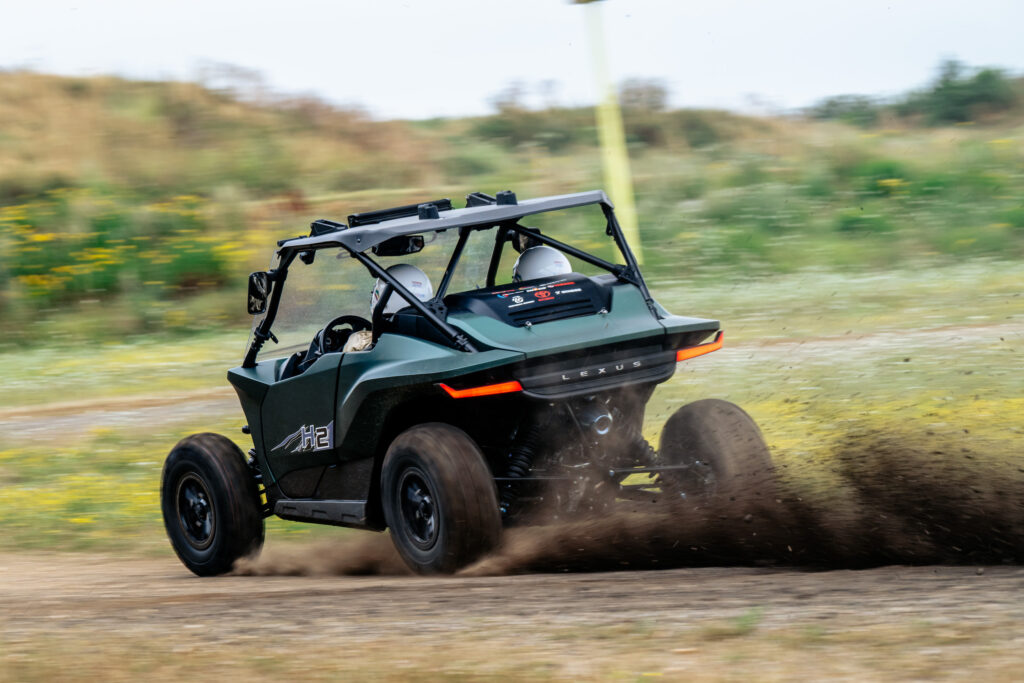
Toyota must be applauded in its efforts to improve mobilty for all, although there is a few quid to be made along the way also! What impressed me most was the Japanese firms’ openess to partnering-up with others to come up with out of the box, innovative thinking to mobilty issues – and it is doing that with an element of fun thrown in too. I must say a big shout out to the boffins behind one of my favourite vehicles on day two, the protype Lexus/Yamaha hydrogen fuelled three-cylinder off road ‘HySE-X1’ buggy. I had literally a gas time in it – sorry! Michael Sheridan




